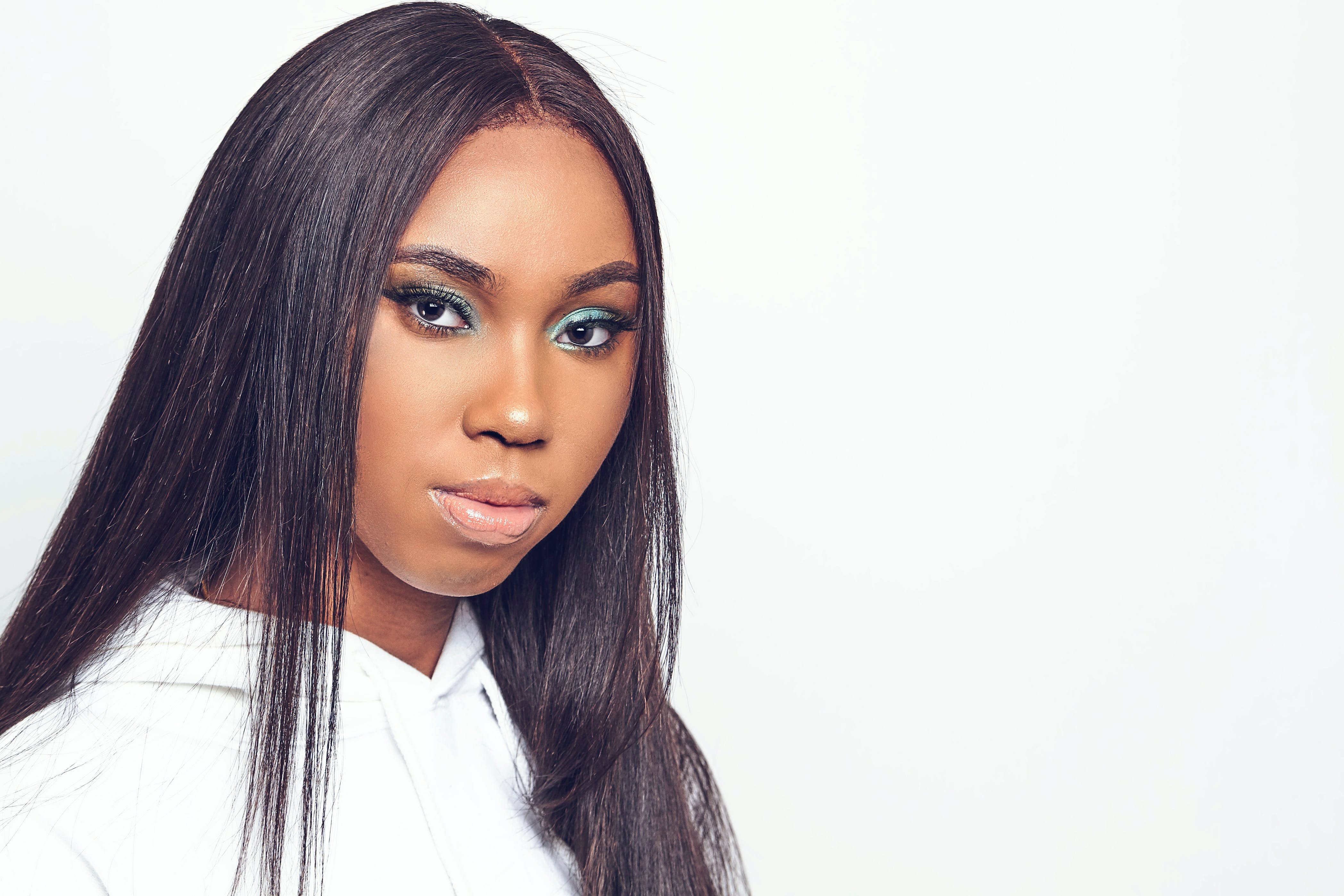For centuries, humans have attempted to manipulate their appearance, and hair has often been the focus of this desire for change. From intricate braids and elaborate updos to vibrant dyes and dramatic cuts, we’ve explored countless ways to express ourselves through our tresses. But one of the most popular and enduring trends is pursuing straight, sleek hair.
Hair straightening, achieved through chemicals, promises to tame frizz, combat curls, and leave smooth, manageable hair. Behind the allure of straight strands lurks a potential health threat concealed within the cosmetic transformations we seek.
In this article, we explore the world of hair straightening, unveiling the hidden dangers beneath seemingly harmless styling practices.
The Chemistry Behind Hair Straightening
Many curl straighten methods rely on the use of potent chemical formulations, typically featuring formaldehyde. Formaldehyde-based solutions, often found in keratin treatments, break the disulfide bonds within the hair shaft. These bonds are responsible for the hair’s natural structure and curl pattern.
When the solution is applied, and heat is subsequently introduced through blow dryers, the hair undergoes a restructuring process. The newly formed bonds force the hair into a straightened configuration, granting the desired sleek appearance. While this chemistry marvelously achieves the aesthetic goal, it also raises red flags concerning the health implications.
Recent studies indicate that many commercial straighteners contain formaldehyde concentrations that surpass recommended safety levels. Elevated formaldehyde exposure, per NIH study, correlates with health risks, including heightened chances of uterine and breast cancer.
It highlights the need for strict regulations, safeguarding cosmetic desires and overall health by understanding chemical intricacies.
TorHoerman Law notes the FDA’s potential ban on formaldehyde in hair relaxers, especially those used by Black women for smoothing and straightening.
Scalp and Hair Damage
The dream of sleek, straight strands often comes at a cost, wreaking havoc on both the hair and the scalp. Chemical straighteners unleash a chemical war on your tresses, leaving behind a trail of damage that can be difficult to repair. These chemicals weaken hair bonds, compromising structure and increasing vulnerability to breakage by breaking down essential bonds.
The scalp, the cradle of hair growth, is often not spared. Chemical straighteners can irritate and inflame the delicate skin, leading to redness, itchiness, and even burning sensations. In severe cases, allergic reactions and even scarring can occur.
Cancer Risks
The procedures to straighten curls have come under scrutiny in recent years, particularly in the context of potential cancer risks associated with certain products. A notable concern revolves around the presence of formaldehyde, a common ingredient in many formulations. Formaldehyde, classified as a known human carcinogen by authoritative health organizations, poses serious health risks when inhaled or absorbed through the skin.
A 2022 study in the Journal of the National Cancer Institute found that regular chemical hair straightener use increases women’s uterine cancer risk. The study underscored the concerning association between straightening practices and heightened cancer susceptibility. This groundbreaking research ignited a wave of further investigations and legal action.
Fueled by the growing body of evidence, hundreds of women have filed lawsuits against major hair product manufacturers. The hair straightener lawsuit alleges that the companies failed to adequately warn consumers about the potential cancer risks associated with their products. Currently consolidated into multidistrict litigation, these lawsuits are closely watched by the public health community and legal experts.
Respiratory Health Concerns
Beyond scalp and hair concerns, curl straightening poses hidden dangers to respiratory health, affecting both stylists and clients. Chemical straighteners release fumes and particles, harming the lungs and extending risks beyond surface damage. Stylists and clients face a substantial threat as high-heat styling tools and chemical products compromise respiratory well-being.
The air around hair straightening activities is a potent cocktail of chemicals. Formaldehyde, a known carcinogen, is a common ingredient in many straightening products, and its release is amplified by heat. Also, volatile organic compounds like acetaldehyde and benzene, known as respiratory irritants, are emitted from both the products and heated hair.
Healthline cites the Agency for Toxic Substances and Disease Registry, revealing that 0.1 to 0.5 ppm formaldehyde irritates. At 0.6 to 1.9 ppm, individuals may experience eczema or changes in lung function, highlighting serious health risks. Formaldehyde exposure at varying levels poses diverse health threats, from irritation and neurological effects to eczema and altered lung function.
However, testing has revealed that air pollution in many salons far exceeds the established standards.
Allergic Reactions
Pursuing sleek, straight hair isn’t risk-free, with allergic reactions emerging as a significant concern in the hair design domain. Many treatments incorporate a cocktail of chemicals, and individuals may unknowingly expose themselves to allergens that trigger adverse skin reactions. Common culprits include the chemicals used in straightening solutions, such as formaldehyde and other irritants.
Allergic reactions present symptoms ranging from mild skin redness and itching to severe conditions like contact dermatitis. Sensitivity to these reactions varies, posing challenges in predicting who might be susceptible to adverse responses. Predicting the extent of susceptibility is challenging due to individual variations in sensitivity to allergic responses.
BarberCosmo notes common allergic reactions in users of these products, including a stuffy or runny nose, sneezing, asthma, and dermatitis. Sensitivity to specific chemicals can trigger allergic reactions consistently with each use, posing ongoing health concerns.
Users should be cautious, as these reactions signal potential sensitivity, necessitating informed choices to mitigate health risks associated with curl designing.
Hormonal Disruption
Beneath the glossy allure of straightened hair lies a less visible concern: the potential for hormonal disruption. Certain chemicals in these products, such as parabens and phthalates, have been associated with endocrine system interference. These substances, absorbed through the scalp, can mimic hormones in the body, leading to imbalances that may affect overall hormonal health.
Women, in particular, may face heightened risks, with implications ranging from irregular menstrual cycles to more severe reproductive health issues.
Tips for Safer Straightening
Embracing sleek hair allure requires cautious navigation in hair straightening, which is crucial to mitigate potential health risks associated with the process.
For a safer hair straightening experience, select reputable salons prioritizing safety and inquire about compliant products. Explore alternative methods with safer formulations or heat-based options. Conduct patch tests before full treatments to avoid allergic reactions. Limit the frequency of straightening to minimize chemical exposure.
Exercise caution with at-home products, following guidelines and opting for lower chemical concentrations. Maintain scalp health through regular moisturizing for enhanced resilience against potential side effects.
Integrate these tips into your hair care routine to relish the beauty of straightened hair while mitigating potential silent dangers.
Navigating the Tresses of Beauty and Health
In the pursuit of silky strands, the journey through hair straightening traverses a landscape laden with silent dangers. As data illuminates the often-overlooked hazards, it becomes imperative for individuals to tread carefully on the path to straightened perfection.
The intertwining of beauty and health demands informed choices, urging consumers to question salon practices, scrutinize product ingredients, and explore safer alternatives. The silent dangers are revealed not to deter but to empower, fostering a beauty culture prioritizing aesthetics and well-being. Embracing balance empowers individuals to navigate beauty, ensuring the pursuit of silky strands doesn’t compromise the underlying symphony of health.




